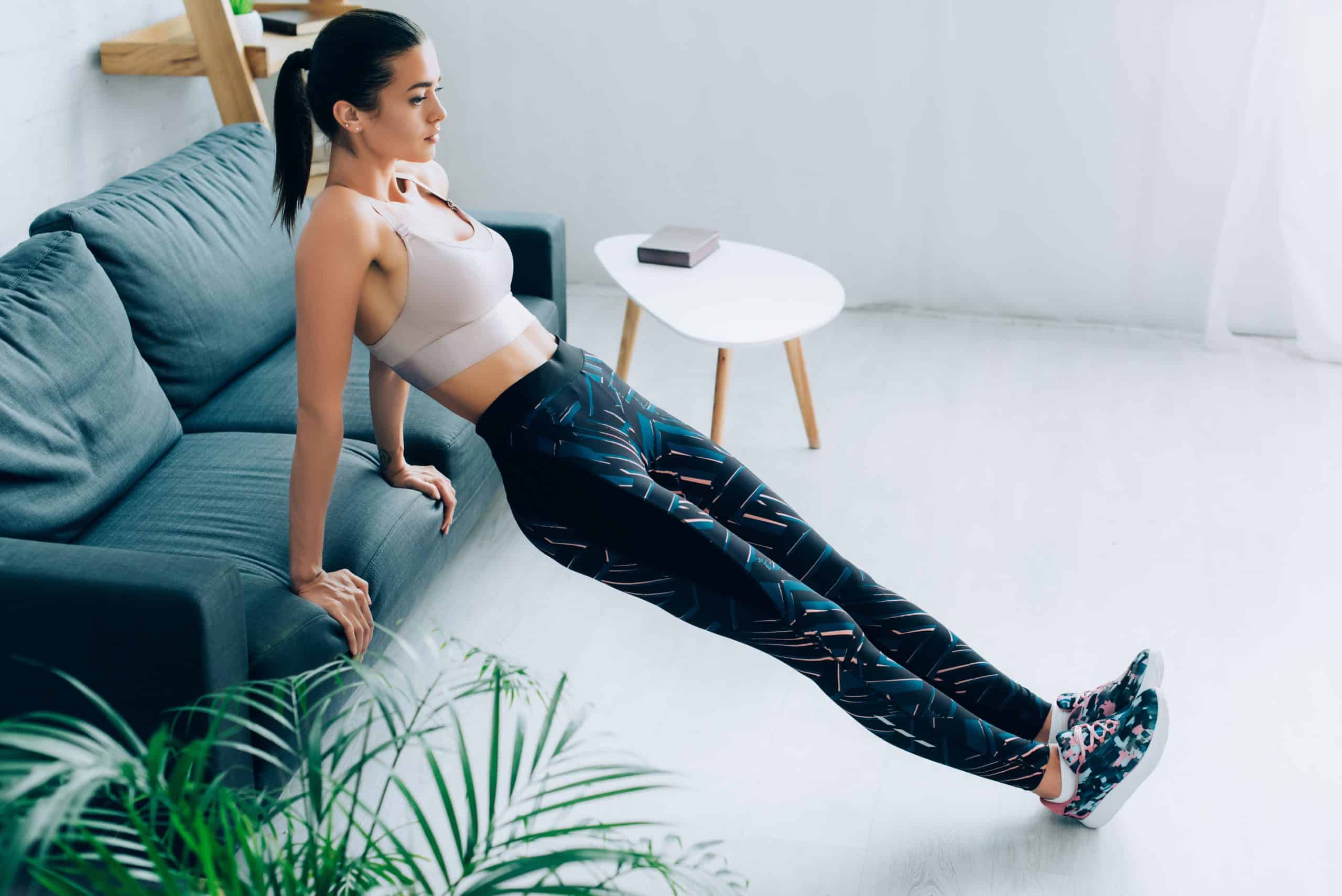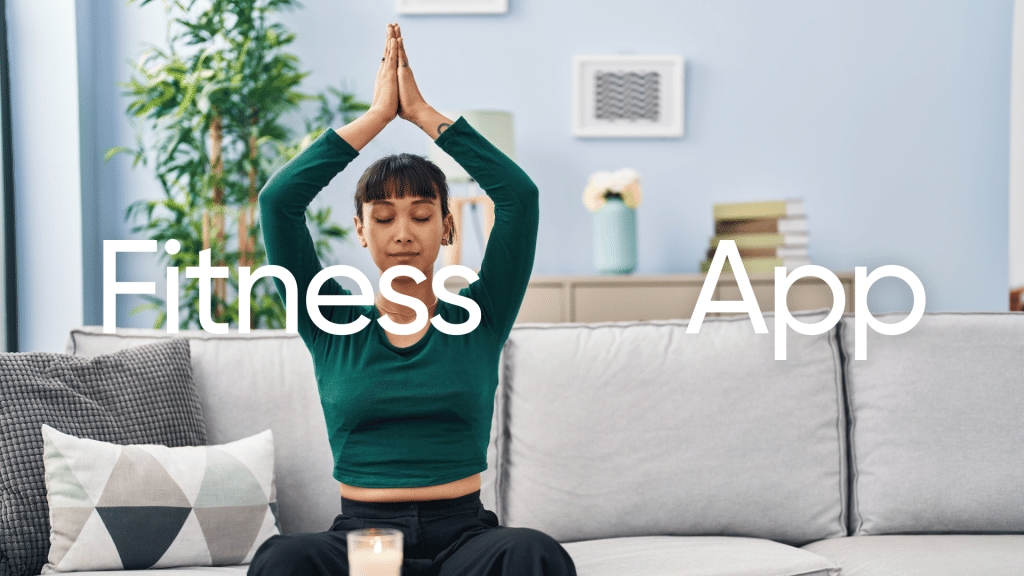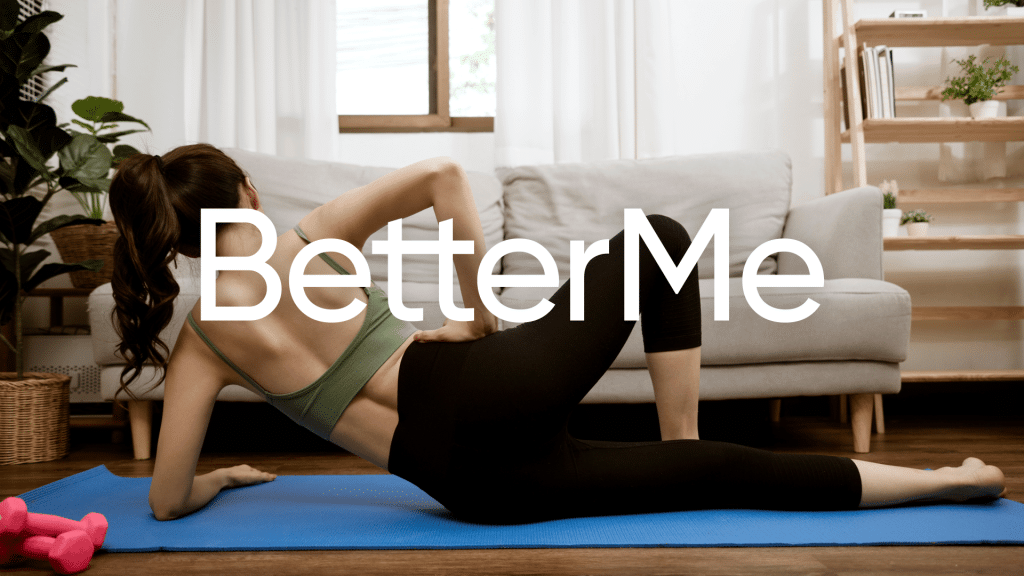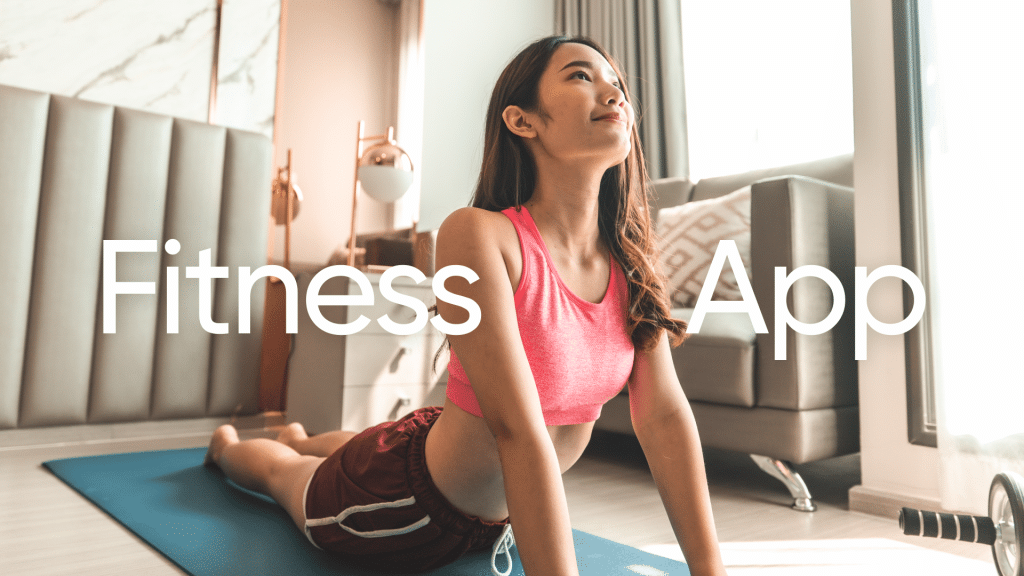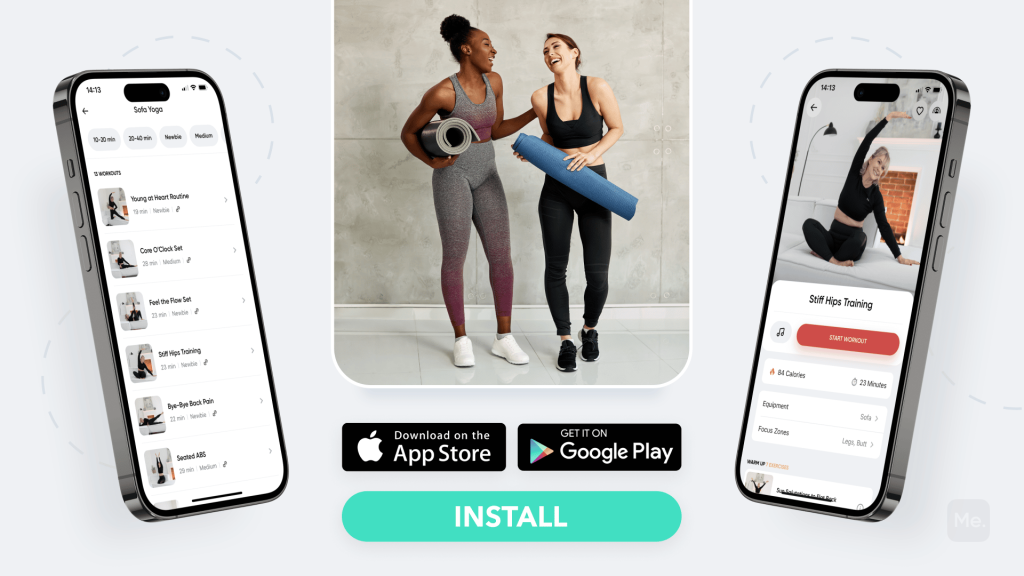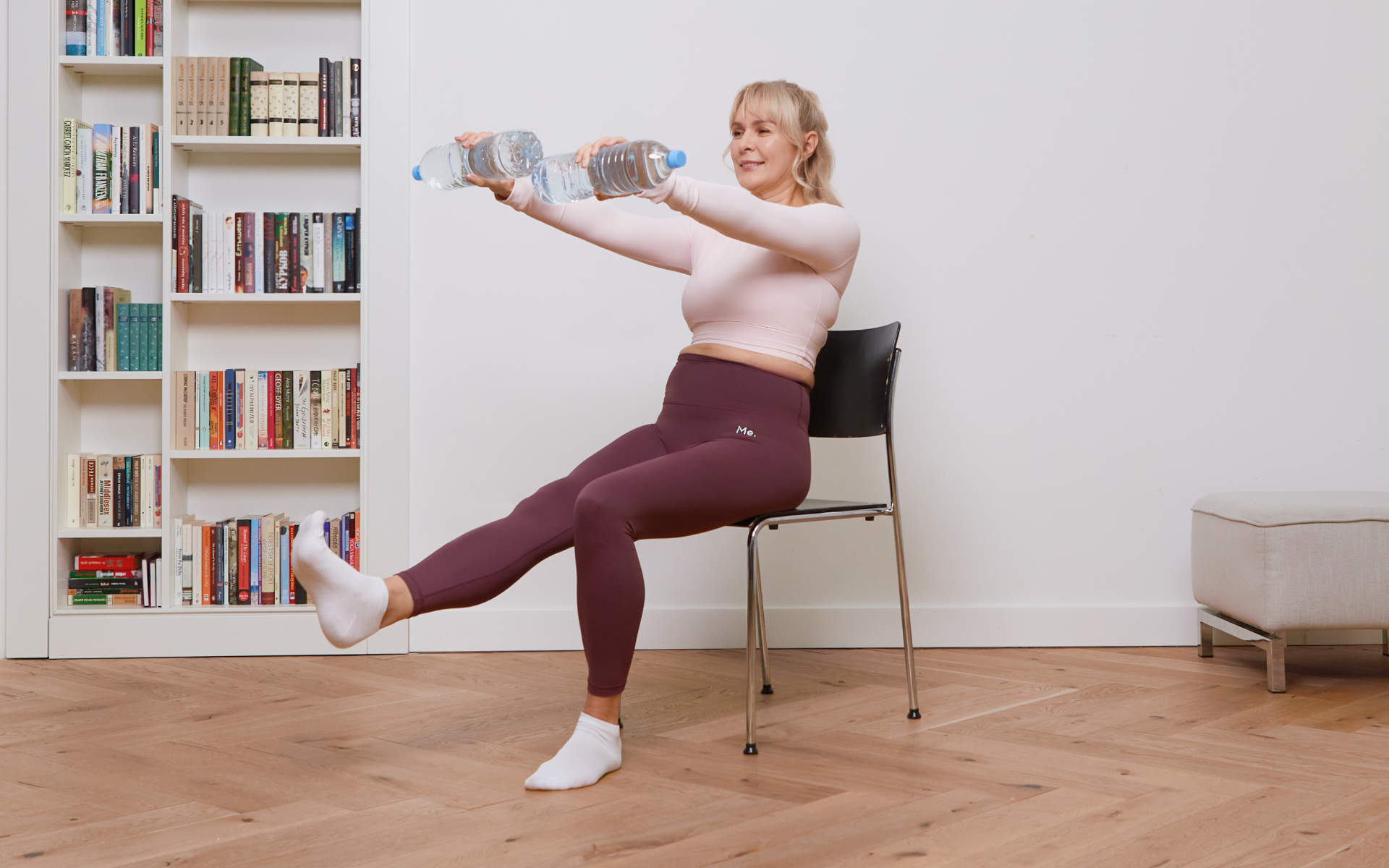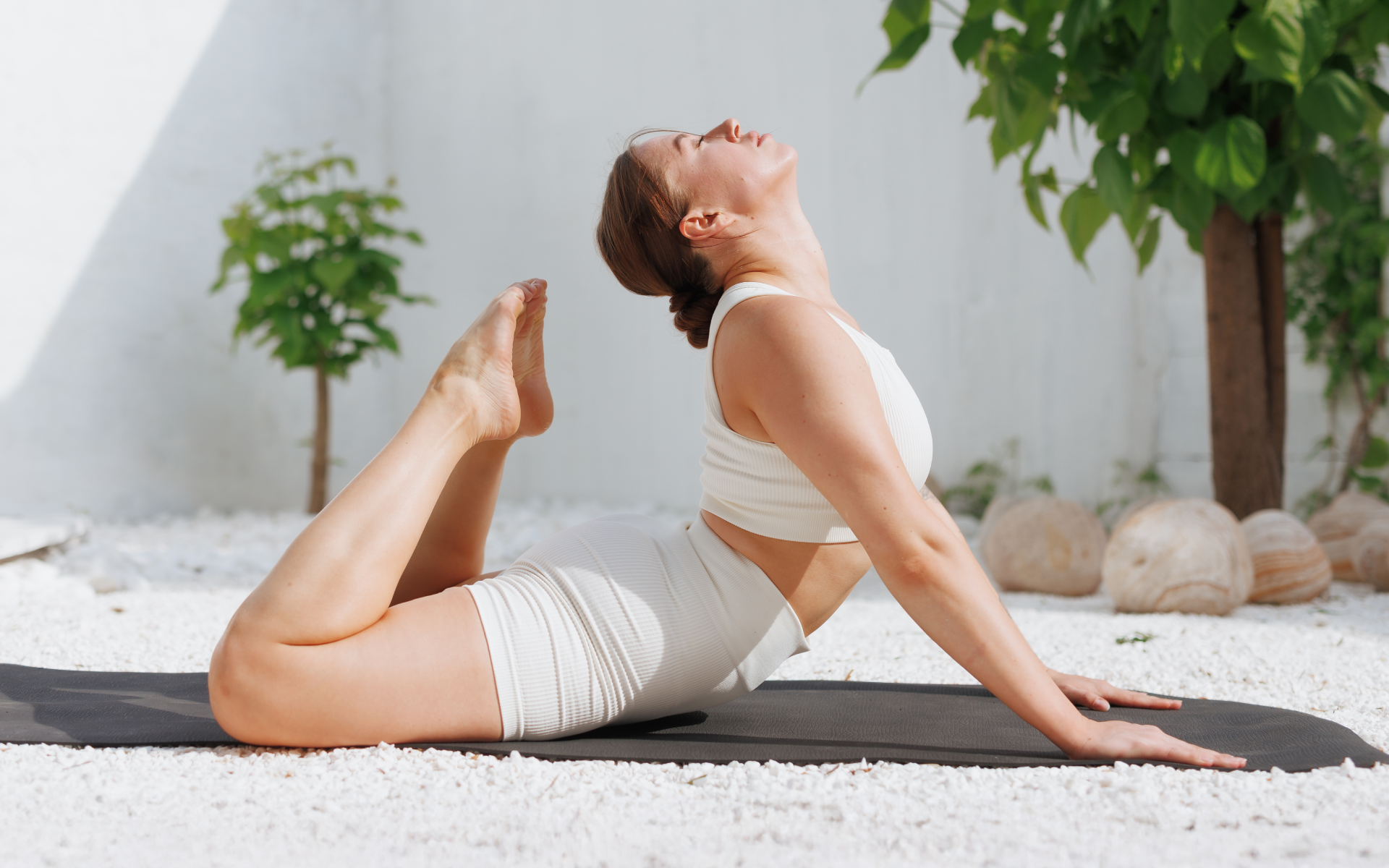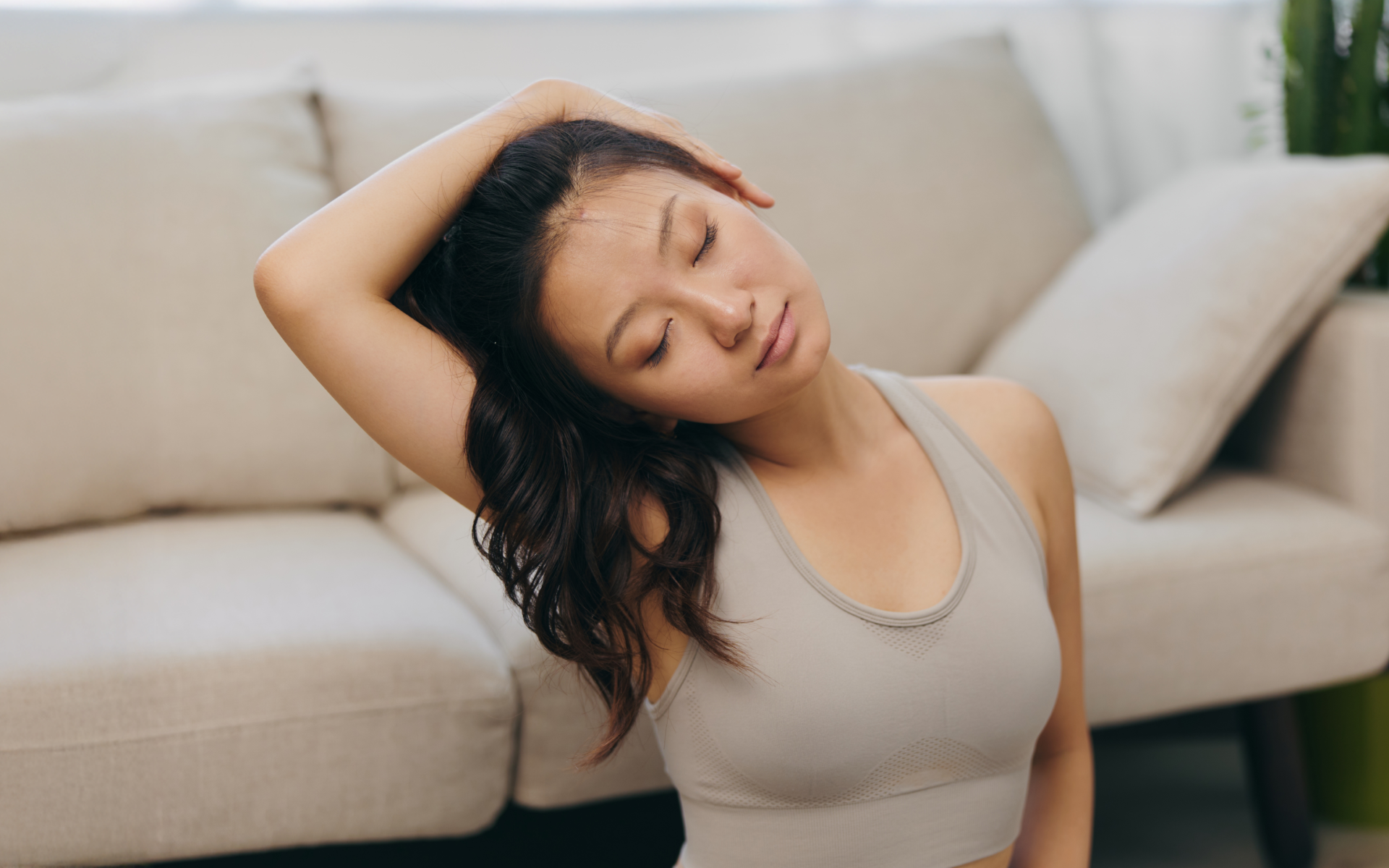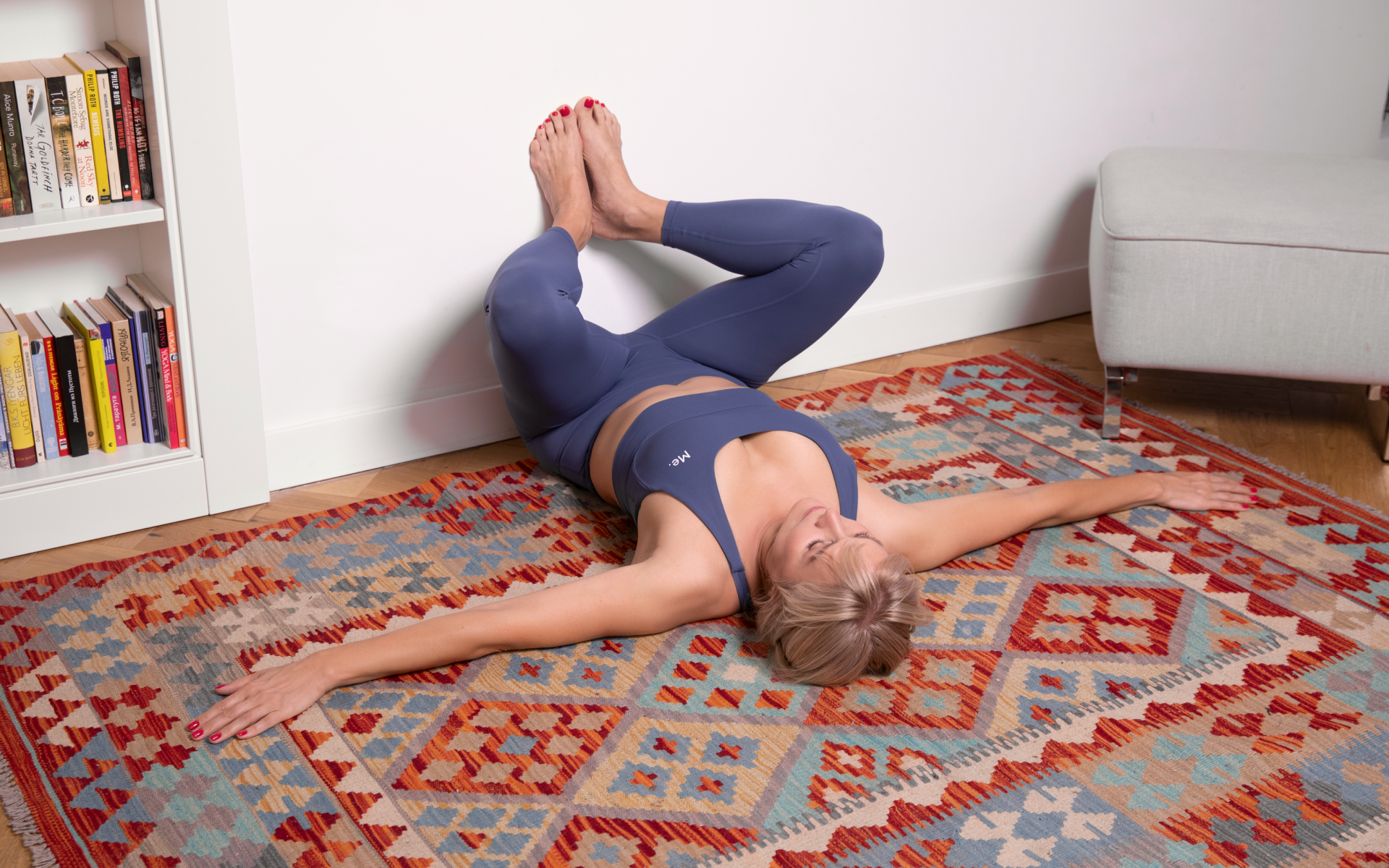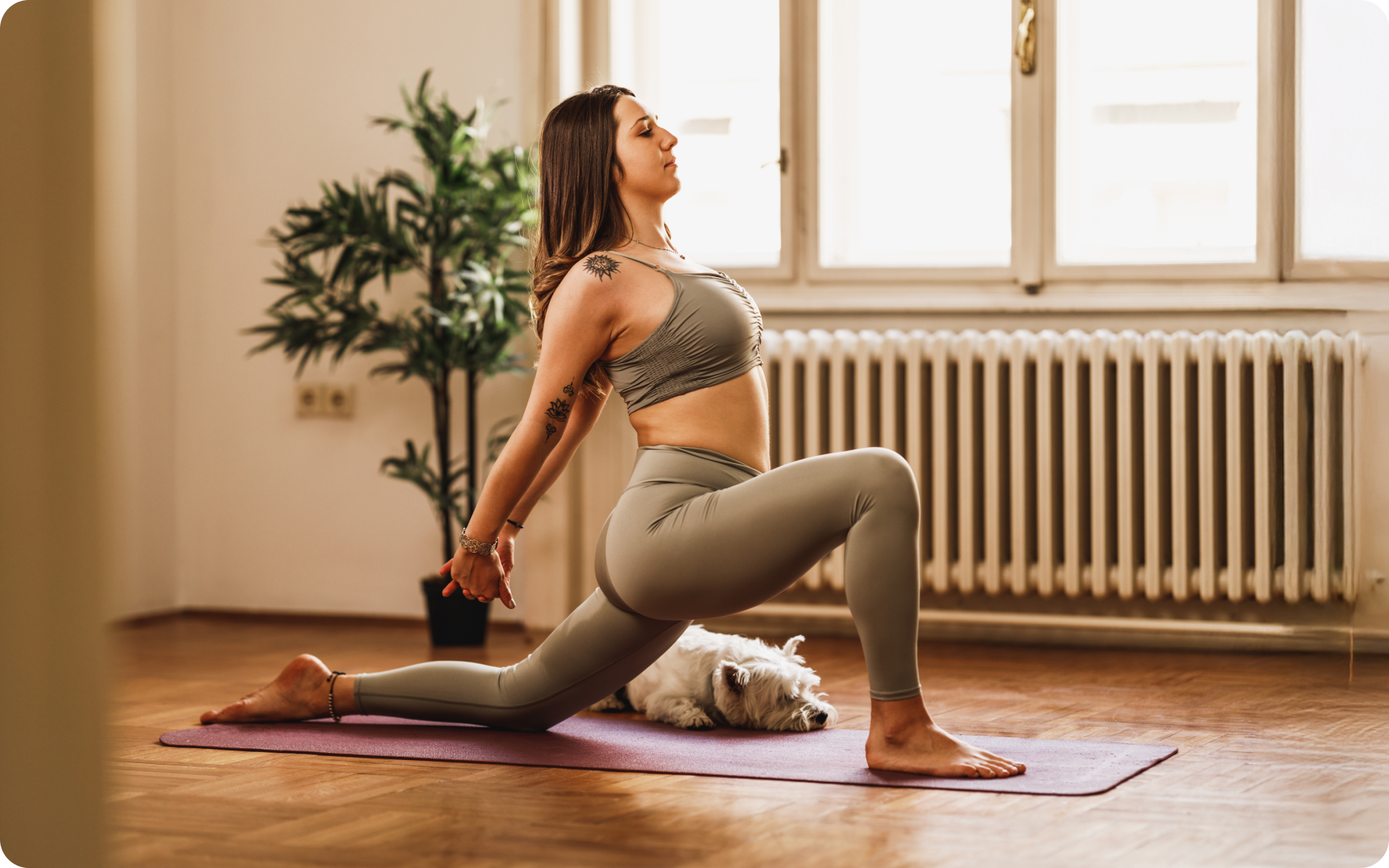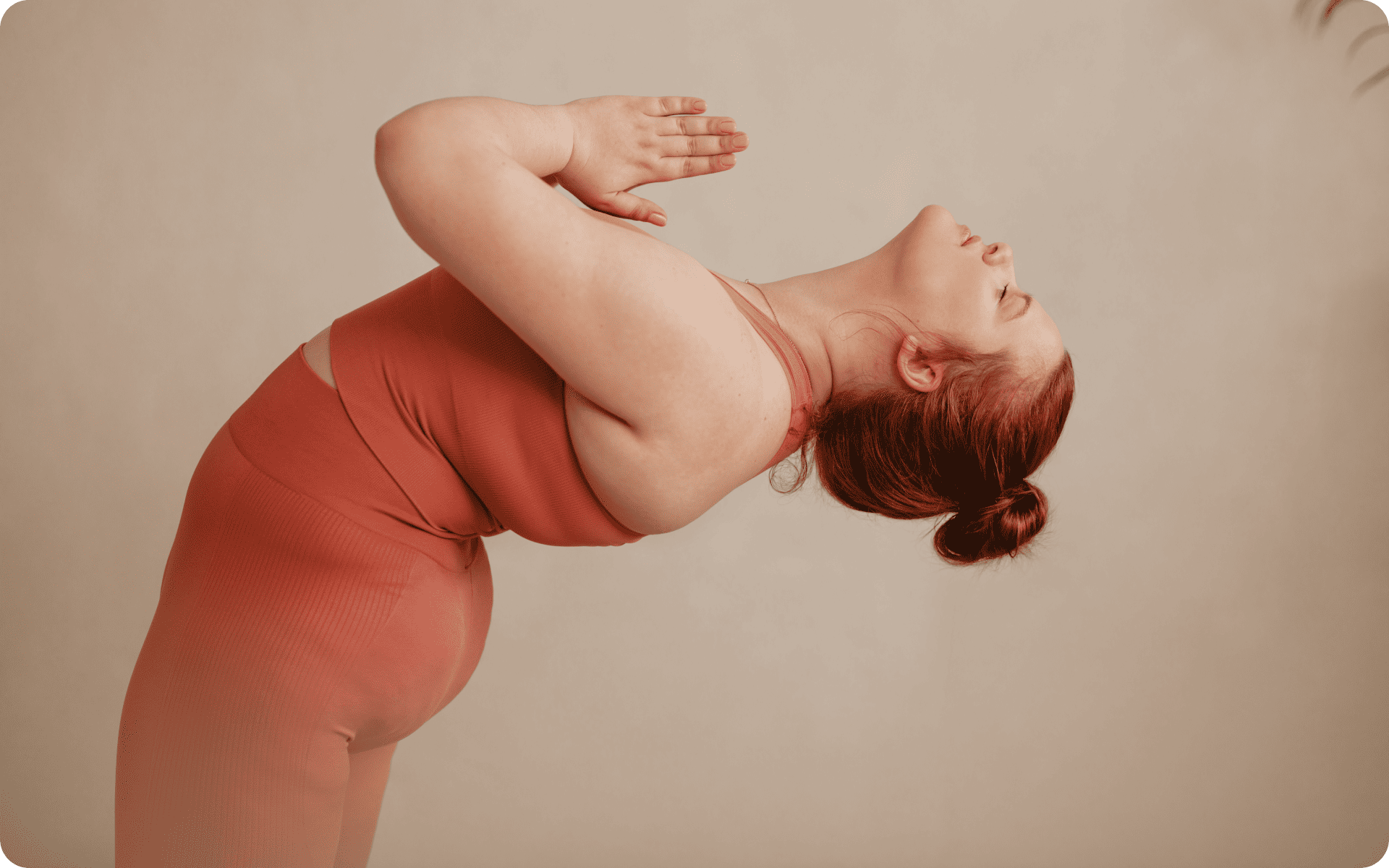We all know that we should stretch. It’s good for our muscles, helps prevent injuries, and just feels darn good. But sometimes it’s hard to find the time or motivation to do it. Especially after a particularly long or tiring day. That’s where sofa yoga comes in. It’s the perfect way to get a little bit of stretching in without even having to get up off the couch. And it’s perfect for lazy girls and guys (like me!) who just don’t feel like doing a full-blown yoga session. You’ll be impressed at how much better you feel after just a few minutes of sofa yoga. In this article, we’ll cover some basic sofa yoga stretches that you can do to loosen up your muscles, improve your flexibility, and just feel darn good. We’ll also list the benefits of this assisted stretching and why it’s perfect for lazy yogis. So, let’s get started!
Get your personalized
meal plan!
Why Sofa Yoga?
Whenever the word sofa is used in fitness circles, it’s usually in relation to bad habits like sitting on the couch all day watching TV. But sofa yoga is different. This type of yoga uses the furniture in your home as props to help you stretch in a variety of ways.
Sofa yoga is perfect for lazy yogis because it doesn’t require you to get up and down off the floor. You can do it right from the comfort of your couch or favorite chair. Please note, it’s not just for lazy people. Sofa yoga is for you if:
- You have limited mobility – whether you’re recovering from an injury or just have some stiffness, sofa yoga can help.
- You don’t have a lot of time – if you only have a few minutes, you can still get in a good stretch with sofa yoga.
- You don’t have a lot of space – if your home is small or you just don’t have a lot of room to move around, sofa yoga is perfect.
- You’re new to yoga – if you’re just starting, sofa yoga is a great way to ease into things.
- You’re a senior citizen – as we age, it’s important to stay flexible. Sofa yoga can help with that.
Read More: How To Do Sofa Yoga As A Beginner: Everything You Need To Know
The Benefits Of Sofa Yoga
Aside from making yoga more accessible, there are other benefits to doing yoga on the couch. These include:
Better Flexibility
Most of us go through life with very tight muscles. We sit at desks, in cars, and on couches for hours on end with bad posture. This can lead to a lot of muscle tightness, which can then lead to pain and inflammation (10).
Sofa yoga can help with that by stretching out your muscles and improving your flexibility. This, in turn, can help reduce pain and inflammation (7) (13).
Improved Circulation
When you’re sitting or standing for long periods, your blood flow can become restricted. This can lead to all sorts of problems like fatigue, varicose veins, and even blood clots (11) (14).
Sofa yoga can help improve your circulation by getting your blood moving again. This can help reduce fatigue, improve brain function, and even prevent varicose veins and blood clots (5).
Lower Stress Levels
We all know that yoga can help reduce stress (12). But did you know that sofa yoga can be even more effective at reducing stress than traditional yoga?
That’s because when you’re doing yoga on the couch, you don’t have to worry about balancing or falling over. This can help you relax even more and let go of all that stress.
Better Sleep
After a tiring day, you’d expect to be able to just fall asleep. But sometimes, that’s not the case. If you have trouble sleeping, sofa yoga can help.
The deep breathing and relaxation that comes with yoga can help you fall asleep more easily. And the stretching can help relieve any muscle tension that may be keeping you awake (2) (6) (8).
Better Posture
Most of us have terrible posture. We slouch when we sit and hunch over when we stand. This can lead to all sorts of problems like back pain, neck pain, and headaches (10).
Sofa yoga can help improve your posture by stretching out your muscles and lengthening your spine. This can help reduce pain and improve your overall health (3).
Better Digestion
If you suffer from digestive issues like constipation, bloating, or gas, sofa yoga can help. The deep breathing and gentle twisting movements help stimulate the digestive system and get things moving again (5) (9).
Improved Immunity
Deep breathing in yoga helps to improve lung function and increase oxygen intake. This can help improve your immunity and fight off infections (15).
BetterMe app will kick you out of the mental funk, shake off your extra weight, rid you off your energy-zapping habits, and help you sculpt the body of your dreams. Intrigued? Hurry up and change your life for the better!
10 Sofa Yoga Moves To Get You Started
Now that you know all the benefits of sofa yoga, it’s time to get started. Here are 10 movements to get you started:
1. Seated Pigeon
Relieve tension in your hips, glutes, and lower back with this move. It targets the iliotibial (IT) band, a long strip of connective tissue that runs down the outside of your leg from your hip to your knee.
How to do it:
- Sit on the edge of your couch with your legs extended in front of you. Both feet should be flexed.
- Cross your right leg over your left, so that your right ankle is resting on your left knee.
- Use your left hand to grab your right ankle, and pull your leg in closer to your body. You should feel a stretch in your right hip and buttock.
- Hold for 30 seconds, then switch sides.
2. Seated Forward Bend
This move stretches your entire back, from your neck down to your glutes. It also helps to relieve stress and calm the mind.
How to do it:
- Sit on the edge of your couch with your legs extended in front of you and your spine straight.
- Bend forward at the hips, keeping your spine straight. You can grab your ankles, shins, or knees with your hands to help you get a deeper stretch.
- Hold for 30 seconds, then slowly sit back up.
3. Seated Twist
This move helps stretch your back and shoulders, and it also stimulates your digestive system.
How to do it:
- Sit on the edge of your couch with your legs extended in front of you and your spine straight.
- Cross your right leg over your left, so that your right ankle is resting on your left knee.
- Place your left hand on the outside of your right knee, and your right hand behind you on the couch.
- Twist your torso to the right, looking over your right shoulder. Hold for 30 seconds, then switch sides.
4. Seated Hip Flexor Stretch
Tight hips can lead to all sorts of problems like lower back pain, knee pain, and hip bursitis. This stretch helps loosen up your hips and relieve pain.
How to do it:
- Kneel in front of your couch, with your left knee resting on a pillow or blanket.
- Place your right foot in front of you, and bend your right knee so that your thigh is parallel to the ground.
- Lean forward, keeping your back straight. You should feel a stretch in your left hip. Hold for 30 seconds, then switch sides.
Read More: Easy Sofa Yoga Routine For Flexibility
5. Seated Cat-Cow Pose
This move helps to stretch your back and shoulders, and it also helps relieve stress.
How to do it:
- Start on your hands and knees on the sofa, with your hands aligned under your shoulders and your knees aligned under your hips.
- As you inhale, arch your back and look up at the ceiling.
- As you exhale, round your back and tuck your chin to your chest.
- Repeat 10 times.
6. Seated Mountain Pose
This movement helps improve your posture, and it also strengthens your core muscles.
How to do it:
- Sit on the edge of your couch with your legs extended in front of you and your spine straight.
- Place your hands on your knees, and press down to lengthen your spine.
- Engage your core muscles, and breathe deeply for 30 seconds.
7. Seated Crescent Moon Pose
This movement helps stretch your back and shoulders, and it also helps improve your balance.
How to do it:
- Sit on the edge of your couch with your legs extended in front of you.
- Place your hands on the couch beside you, and press down to lift your hips off the couch.
- Extend your left leg behind you, and point your toes.
- Reach your left arm up overhead, and look up at your hand. Hold for 5 breaths, then switch sides.
8. Child’s Pose
This is a restorative pose that helps stretch your back and shoulders, and it also calms the mind.
How to do it:
- Start on your hands and knees on the couch, with your hands aligned under your shoulders and your knees aligned under your hips.
- As you exhale, sit back on your heels and lower your forehead to the couch.
- Extend your arms in front of you, and rest your forehead on your hands.
- Breathe deeply for 30 seconds to 1 minute.
9. Sphinx Pose
Another good pose for stretching your back, Sphinx also helps relieve stress and calm the mind.
How to do it:
- Lie on your stomach on the couch, with your legs extended behind you and your arms resting at your sides.
- As you inhale, prop yourself up on your elbows and look straight ahead.
- Hold for 5 breaths, then lower back down.
Lean and toned up body isn’t just a far-fetched fantasy. Check out the BetterMe app and watch it propel your weight loss journey into high gear!
10. Corpse Pose
This final pose is a resting pose that helps relax the entire body. It’s also a good way to end your yoga practice.
How to do it:
- Lie on your back on the couch, with your legs extended and your arms resting at your sides.
- Allow your whole body to relax, and breathe deeply for 5 minutes.
How To Ensure Your Sofa Yoga Session Is Effective
Lazy as we might feel while sprawled out on the sofa, there are a few key things to keep in mind to make sure your at-home yoga practice is as effective as possible.
Make Sure Your Couch Is Firm
A firm surface is important for yoga since it helps ensure that you can maintain proper alignment in your poses. If your couch is too soft, you might find yourself sinking into it, which can make it difficult to maintain balance and form.
If your couch is on the softer side, consider using a bed with a firm mattress, or placing a folded blanket on top of your couch to make it more stable.
Be Present
A mind-muscle connection is important in yoga, so it’s important to focus on your breath and your body while you’re doing your poses. If your mind starts to wander, simply bring your attention back to your breath.
Prioritize Form Over Depth
It’s important to focus on maintaining proper form in your poses, rather than trying to go as deep into the pose as possible. If you have any pain in your joints or muscles, back out of the pose until the pain subsides.
Be Consistent
Like most types of exercise, yoga is most effective when it’s practiced regularly. To see the most benefits, aim to do at least 20 minutes of yoga on most days of the week.
Warm Up and Cool Down
Before you start your yoga practice, it’s a good idea to do some gentle stretching or light cardio to warm up your muscles. After your yoga session, take some time to do some more stretching or relaxation exercises. This will help prevent stiffness and soreness (1) (4).
The Bottom Line
Yoga is a great way to stretch and strengthen your body, and it can be done anywhere – even on your couch. So next time you’re feeling lazy, consider doing some sofa yoga instead. Remember to focus on your breath and form, and be consistent with your practice to see the most benefits.
DISCLAIMER:
This article is intended for general informational purposes only and does not serve to address individual circumstances. It is not a substitute for professional advice or help and should not be relied on for making any kind of decision-making. Any action taken as a direct or indirect result of the information in this article is entirely at your own risk and is your sole responsibility.
BetterMe, its content staff, and its medical advisors accept no responsibility for inaccuracies, errors, misstatements, inconsistencies, or omissions and specifically disclaim any liability, loss or risk, personal, professional or otherwise, which may be incurred as a consequence, directly or indirectly, of the use and/or application of any content.
You should always seek the advice of your physician or other qualified health provider with any questions you may have regarding a medical condition or your specific situation. Never disregard professional medical advice or delay seeking it because of BetterMe content. If you suspect or think you may have a medical emergency, call your doctor.
SOURCES:
- Do We Need a Cool-Down After Exercise? A Narrative Review of the Psychophysiological Effects and the Effects on Performance, Injuries and the Long-Term Adaptive Response (2018, link.springer.com)
- Effectiveness of a short Yoga Nidra meditation on stress, sleep, and well-being in a large and diverse sample (2020, link.springer.com)
- Effects of hatha yoga exercises on spine flexibility in women over 50 years old (2015, ncbi.nlm.nih.gov)
- Effects of Warming-up on Physical Performance: A Systematic Review With Meta-analysis (2010, journals.lww.com)
- Exploring the therapeutic effects of yoga and its ability to increase quality of life (2011, ncbi.nlm.nih.gov)
- How Yoga Can Improve Your Sleep Quality (2022, sleepfoundation.org)
- Impact of 10-weeks of yoga practice on flexibility and balance of college athletes (2016, ncbi.nlm.nih.gov)
- Impact of long term Yoga practice on sleep quality and quality of life in the elderly (2013, ncbi.nlm.nih.gov)
- Medical Yoga Therapy (2016, mdpi.com)
- Posture (n.d., physio-pedia.com)
- Prolonged work- and computer-related seated immobility and risk of venous thromboembolism (2010, ncbi.nlm.nih.gov)
- The Effect of Yoga on Stress, Anxiety, and Depression in Women (2018, ncbi.nlm.nih.gov)
- The effects of selected asanas in Iyengar yoga on flexibility: pilot study (2014, pubmed.ncbi.nlm.nih.gov)
- Varicose veins: Overview (2022, ncbi.nlm.nih.gov)
- Yoga and immune system functioning: a systematic review of randomized controlled trials (2018, pubmed.ncbi.nlm.nih.gov)
